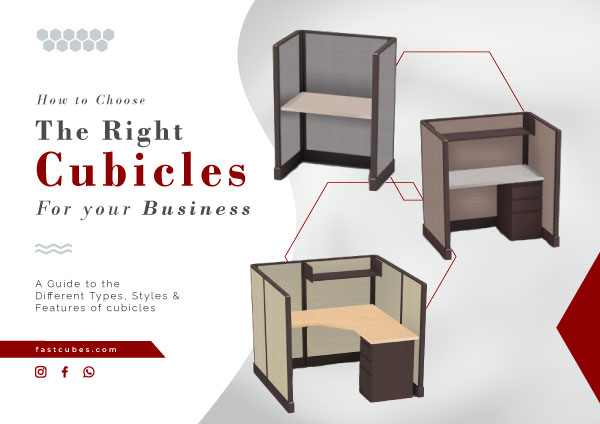How to Choose the Right Cubicles for Your Business: A Guide to the Different Types, Styles, and Features of Cubicles
Optimizing your office space is a critical consideration for any business owner looking to enhance productivity and employee satisfaction. Cubicles offer a versatile solution that can be tailored to your specific needs and preferences. There are numerous benefits to incorporating cubicles into your workspace, including:
Space and Cost Efficiency:
Cubicles can help you save on floor area and furniture costs compared to traditional office layouts, making them a budget-friendly choice.
Productivity and Efficiency:
By reducing noise and distractions while enhancing privacy and concentration, cubicles can lead to improved employee productivity.
Communication and Collaboration:
Cubicles are designed to promote teamwork and information sharing among employees, fostering better communication and collaboration within your organization.
Personalization:
Employees can personalize their workspaces, expressing their individuality and creating a more enjoyable work environment, which can boost morale and satisfaction.
However, choosing the right cubicles for your business can be a complex decision. There are several factors to consider when making this choice:
1. Type of Cubicle:
- Full-Height Cubicles: These are the most private, with walls reaching the ceiling and doors for added security. They are ideal for employees requiring a high level of privacy, such as managers or confidential workers.
- Partial-Height Cubicles: These are versatile, with walls about five to six feet high and no doors. They offer a balance between privacy and openness, suitable for employees who need some interaction.
- Low-Wall Cubicles: These are open and collaborative, with walls about three to four feet high and no doors. They are perfect for employees needing a lot of communication and cooperation.
2. Style of Cubicle:
- Panel-Based Cubicles: Traditional and functional, using panels or partitions to create workstations. They offer stability, durability, and customization options.
- Desk-Based Cubicles: Modern and minimalist, using desks or tables to create workstations. They offer flexibility, mobility, and a more open feel.
3. Features of Cubicle:
- Size: Ensure that the cubicle size matches the employee’s needs and work requirements to prevent discomfort or inefficiency.
- Shape: The shape of the cubicle should fit the office space and furniture layout. Square or rectangular cubicles are suitable for regular office spaces, while L-shaped or U-shaped cubicles work well in corners or irregular spaces.
- Color: Match the color of the cubicle to the office’s color scheme and the employee’s preferences to create the desired atmosphere.
- Material: The material should match the office’s quality and style and the employee’s preferences. Materials like metal or wood can create a sturdy and elegant look, while fabric or plastic materials offer a softer, cozier appearance.
- Power: Ensure the cubicle provides sufficient power outlets and cords to accommodate all the devices and equipment employees use.
- Data: A reliable and fast data connection is crucial for accessing online resources and services. Ensure that your cubicles meet your employees’ internet needs.
Choosing the right cubicles for your business can be a challenging yet rewarding task. By considering these factors, you can find the best cubicles to meet your needs and those of your employees. Well-designed cubicles can significantly impact your office environment, so choose wisely.



